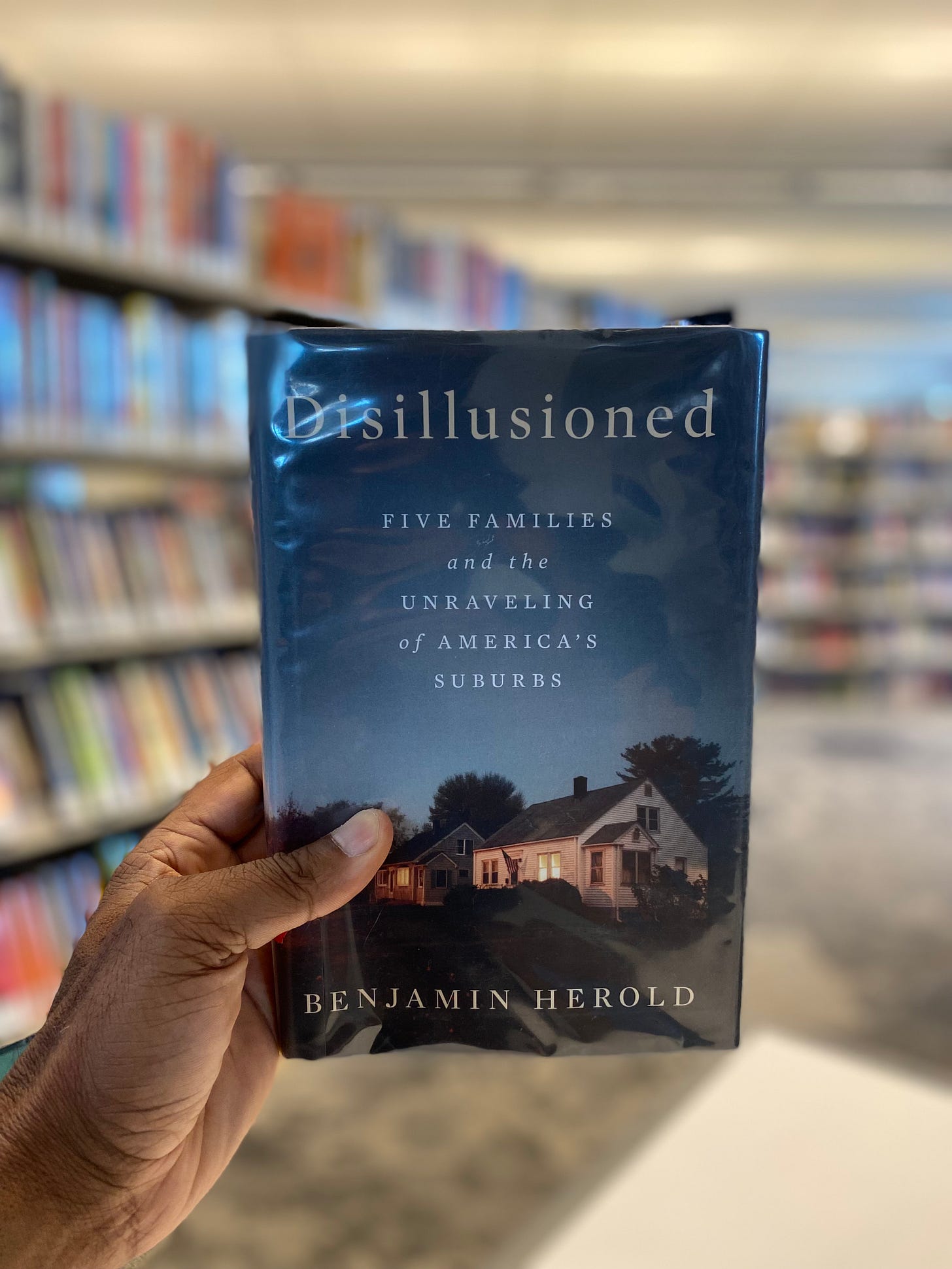Is the Suburban Dream Crumbling in America?
Benjamin Herold’s "Disillusioned: Five Families and the Unraveling of America's Suburbs" delves into the myth of the American suburban dream, exposing the fragile and unsustainable foundations upon which it is built.
Herold’s incisive exploration of the lives of five families from diverse backgrounds illuminates the economic, social, and racial challenges that plague suburban America today.
Through a narrative that intertwines personal stories with historical and societal analysis, Herold presents a compelling critique of the suburbs as a symbol of American prosperity and opportunity.
Having personally lived in various suburbs throughout my life, I witnessed firsthand the allure and disillusionment of suburban living. The promise of safety, better schools, and a higher quality of life often draws families to these communities. However, my experiences reflect many of the issues Herold highlights, such as economic pressures, racial tensions, and the decaying infrastructure of these supposedly idyllic areas.
Herold’s book stands out among recent literature on the suburbs due to its focus on the lived experiences of families from different racial and economic backgrounds. In comparison, books like Richard Rothstein's "The Color of Law" and Lisa McGirr's "Suburban Warriors" provide more of a historical and socio-political perspective.
Rothstein’s work delves into the government policies that enforced segregation in suburbs, while McGirr examines the rise of conservative politics in suburban America. Herold, on the other hand, offers a more intimate and contemporary look at how these historical forces manifest in the daily lives of suburban residents today.
Suburbia and Black America
The movement of African Americans to suburban areas has been marked by both opportunity and struggle. Historically, suburbs were designed to exclude Black families through policies like redlining and restrictive covenants.
Today, as more Black Americans move to suburbs in search of better opportunities, they often encounter the same systemic barriers that their predecessors faced. Herold’s portrayal of a middle-class Black family in Atlanta, grappling with a punitive school system, underscores the persistent racial inequalities that mar the suburban experience.
Key Perspectives from the Book
Herold’s book offers several practical insights into the realities of suburban living amid soaring housing costs. One key perspective is the unsustainability of suburban development. Herold highlights how endless expansion and reliance on car-centric infrastructure are proving to be untenable as housing prices rise and economic pressures mount.
Herold also highlights the critical role of public schools in suburban communities, revealing how they reflect broader societal fractures and inequalities.
Emerging Trends in Suburban Living
Recent trends in suburban living suggest a shift towards more sustainable and inclusive community development. As remote work becomes more common and urban housing costs soar, suburbs are experiencing renewed growth. However, there is a push to transform these areas into denser, more walkable, and mixed-use communities. This "decentralized urbanism" aims to address issues like sprawl, car dependence, and social isolation.
Experts advocate for loosening zoning laws, building more dense housing, and improving non-car transportation options to create vibrant neighborhoods. The concept of "20-minute suburbs," where residents can access most daily needs within a short walk or bike ride, is gaining traction. This trend reflects a broader demographic shift, with increasing racial and ethnic diversity occurring faster in suburban areas compared to rural ones.
"Disillusioned: Five Families and the Unraveling of America's Suburbs" is a crucial work that challenges the myth of the American suburban dream. Herold’s intimate portrayal of diverse families grappling with the realities of suburban life offers a powerful critique of the structural inequalities and unsustainable practices that underpin these communities.
As suburbs around the nation continue to evolve in response to economic, social, and demographic pressures, Herold’s book serves as a poignant reminder of the need for equitable and sustainable community development. The emerging trends in suburban living suggest a potential for transformation, but only if we confront the historical and systemic issues that have long plagued these areas.
Diamond Michael Scott is a former urban journalist who has written hundreds of feature articles for publications like Comstock’s Magazine, Governing Magazine, New Geography and many others. You can support Diamond in building his community here by becoming a free subscriber or member supporter. Every little bit is appreciated.






